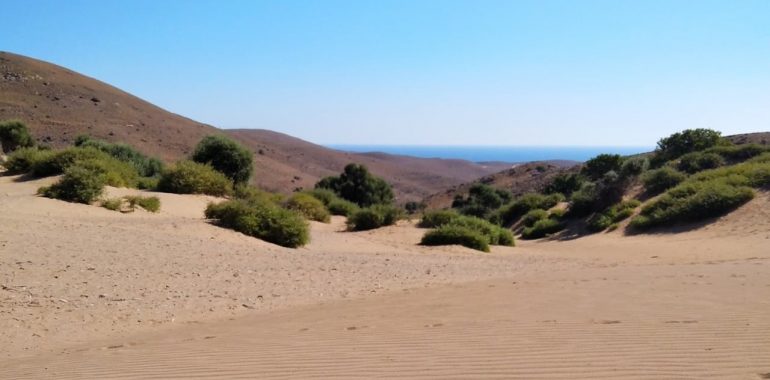Lemnos: The Greek Island Home to Europe’s Only Desert

Lemnos: The Greek Island Home to Europe’s Only Desert
The European continent is not known for its deserts. Stereotypically, one tends to think of the Sahara or the Arabian desert. However, Greece has a desert of its own located on the beautiful island of Lemnos.
Lemnos, the eighth-largest Greek island, is a magical place. Located in the northern Aegean, wedged between mainland Greece and Turkey, Lemnos is full of unique archaeological sites, picturesque beaches, and some of the most delicious local delicacies anywhere in Greece.
Apart from its sun-soaked beaches and world-famous wine, the Greek island of Lemnos is also known as the home of what is possibly the only desert in Europe.
Geography of the island
The rugged western region of the island reaches heights of 1,410 feet (430 meters) at Múrtzeflos Cape. This area contrasts with the more gently sloping and fertile eastern portions, which are divided from the west by two deep inlets: Pourniá to the north and Moúdros (also known as Moúdhrou) to the south. Covering an area of 184 square miles (476 square kilometers), the island’s western region lacks trees, whereas the valleys and plains in the east are arable and productive.
The principal town and port of Lemnos is Myrina, situated on the island’s western coast. Mírina serves as the seat of the metropolitan bishop of Lemnos and is connected to the nearby island of Agios Efstratios to the south.
The island’s second-largest settlement is Moúdros, located on the bay that shares its name. Moúdros Bay is renowned as one of the finest natural harbors in the Aegean region.
The sand dunes on Lemnos
On the north side of Lemnos, in an area called Gomati, visitors have the chance to witness a unique and unexpected sight — a small, sandy desert.
This area, which measures 7 hectares, or a little over 17 acres, is located far from the island’s many beaches and resembles a scene found in the Middle East or North Africa, not a Greek island.
Due to Lemnos’ particularly windy climate, the many sand dunes located in the desert of Gomati constantly change shape, depending on the direction of the wind, just like the Sahara Desert.
The sand dunes, also known as “Pachies Ammoudies,” are one of the most unique attractions on the island Lemnos, created by natural erosion caused by the prevailing winds blowing from across the sea.
Lemnos’ desert home to unique flowers and herbs
The ever-changing terrain and landscape of the sand dunes, accompanied by the deep-blue colors of the Aegean Sea make for an unforgettable sight.
Just as striking, the area’s flora mostly consists of beautiful white lilies, also known as pancratium maritimum, while sand-friendly vegetation such as osier, thyme, oleander, and wild olive trees encircle the sand dunes.
It is worth noting that the landscape’s uniqueness has led many film and commercial directors to shoot scenes in the small Greek desert.